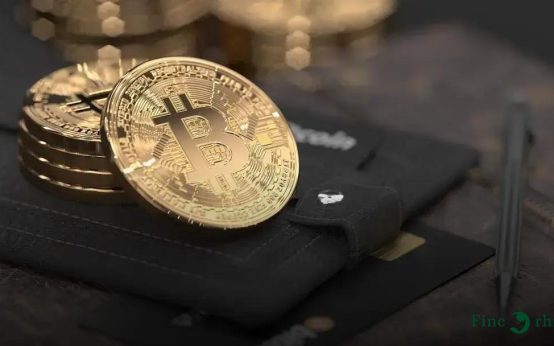The world of finance is undergoing a seismic shift with the advent of decentralized finance, popularly known as DeFi. As traditional financial systems struggle with inefficiencies and centralization concerns, DeFi presents a revolutionary alternative. It leverages blockchain technology to offer transparent, accessible, and democratized financial services. From lending platforms to decentralized exchanges, DeFi is reshaping how we think about money and financial operations. This blog delves into the core principles, trends, and impacts of DeFi, providing insight into its potential to redefine the future of finance.
Understanding DeFi and Its Core Principles
Decentralized Finance, or DeFi, represents a shift from traditional financial systems to peer-to-peer finance enabled by decentralized technologies like blockchain. The core principles of DeFi include transparency, accessibility, and the elimination of middlemen.
Transparency is a cornerstone, as transactions on the blockchain are visible to all and are immutable, ensuring trust and security. This open ledger system allows users to verify transactions independently, enhancing trust within the system.
Accessibility eliminates traditional barriers to entry, such as geographical and jurisdictional restrictions. Anyone with an internet connection can access DeFi services, providing financial opportunities to unbanked and underbanked populations.
By removing intermediaries like banks and brokers, DeFi creates a more efficient and cost-effective financial ecosystem. Smart contracts automate processes that would typically require manual intervention, ensuring efficiency and reducing costs. These smart contracts execute automatically when certain conditions are met, streamlining financial transactions and interactions.
Moreover, DeFi promotes interoperability, allowing different platforms and applications to work in tandem. This enables users to move their digital assets seamlessly across various DeFi services, enhancing user experience and creating a vibrant ecosystem of financial products.
Key Trends Shaping the Future of DeFi
Decentralized Finance, or DeFi, is continuously evolving, with several key trends profoundly influencing its future. One major trend is increased integration with traditional financial systems. Financial institutions are beginning to explore partnerships with DeFi platforms to offer more seamless services to users. This integration can lead to greater adoption and trust in decentralized financial systems.
Another significant trend is the rise of automated market makers (AMMs). These systems are replacing traditional order book models, allowing for more efficient trading and liquidity provision without intermediaries. This technological advancement is making DeFi more accessible and functional.
The growing popularity of layer-2 solutions is also shaping DeFi’s future. By enhancing scalability and reducing transaction costs, these solutions enable DeFi platforms to handle more users and transactions, amplifying their reach and capability.
Additionally, cross-chain compatibility is gaining momentum, allowing different blockchain networks to interact seamlessly. This interoperability is a game-changer, as it enables users to move assets and value across various platforms efficiently.
Finally, regulatory developments are increasingly impacting DeFi. As governments worldwide navigate the complexities of DeFi, new regulations and guidelines are emerging. These changes may introduce more security and trust into the ecosystem while potentially imposing limits that DeFi developers must navigate.
Challenges and Risks in the DeFi Ecosystem
Volatility and Market Risks
One of the primary risks associated with the DeFi ecosystem is market volatility. Cryptocurrencies are known for their dramatic price swings, which can lead to significant financial losses. Users need to be aware of the unpredictable nature of these digital assets and exercise caution when investing.
Smart Contract Vulnerabilities
Smart contracts form the backbone of DeFi protocols. However, these contracts can have vulnerabilities if not properly audited. Errors in coding can lead to hacks and the loss of funds, underscoring the importance of thorough smart contract audits.
Regulatory Uncertainty
The legal landscape of DeFi is still developing, leading to regulatory risks for users and developers. Governments worldwide are trying to figure out how to regulate these decentralized systems, which can create uncertainties for future operations and legality.
Scalability Challenges
As the popularity of DeFi grows, scalability issues become apparent. Network congestion can lead to high transaction fees and slow processing times, limiting user adoption and affecting the overall user experience.
Security Risks
The lack of centralized oversight means more responsibility falls on the users themselves. Phishing scams, fraudulent projects, and cyber attacks are prevalent. Users must exercise keen awareness and due diligence when interacting with DeFi applications to safeguard their investments.
Potential Impact of DeFi on Traditional Finance
The integration of decentralized finance, or DeFi, into traditional finance systems holds transformative potential. One key area is the disruption of banking services. As DeFi platforms offer peer-to-peer lending and borrowing, the need for intermediaries diminishes. This reduction could lead to lower transaction fees and more inclusive financial services.
Another significant impact could be on asset management. Through tokenization, DeFi enables fractional ownership of assets, making investment opportunities accessible to a broader audience. This democratization of asset ownership could challenge conventional asset management practices, potentially increasing market efficiency and liquidity.
Traditional financial institutions may also feel pressure to innovate. The transparency and security features of blockchain technology could push banks to adopt more open and secure systems. This may lead to a blending of DeFi and traditional finance models, where hybrid products and services emerge.
Regulation might be another area of impact. As DeFi grows, regulatory bodies could establish new frameworks to ensure consumer protection without stifling innovation. The dialogue between regulators and DeFi developers will be crucial in shaping a resilient financial landscape.
Global financial inclusion is a potential benefit as well. DeFi can provide access to financial services for the unbanked and underserved populations worldwide. By leveraging blockchain, individuals in remote regions might gain opportunities to participate in global markets, reducing economic disparity.
The adaptation of DeFi within traditional finance systems may not be immediate but is likely inevitable. Stakeholders across both sectors must navigate the challenges and opportunities presented by this emerging paradigm.
Innovations Driving the Next Wave of DeFi
Decentralized Finance, or DeFi, is continuously evolving, driven by remarkable innovations that seek to push the boundaries of traditional finance. New innovations are at the heart of the next wave of DeFi advancements, creating more opportunities and efficiency in the financial ecosystem.
Smart Contracts are one of the biggest driving forces behind this transformation. They automate transactions across decentralized platforms without the need for an intermediary, thus reducing costs and improving transaction speed. This self-executing feature ensures transparency and security, making financial agreements more reliable.
Cross-Chain Interoperability
The emergence of cross-chain technology is another pivotal innovation. By enabling different blockchain networks to communicate seamlessly, this technology expands the accessibility and use cases of DeFi products across varied blockchains. This promises to enhance versatility and choice for users, leading to much broader adoption.
Decentralized Exchanges (DEXs), with their innovative features, are becoming increasingly significant. They allow direct peer-to-peer trading of digital assets without needing a central authority, promoting privacy and control over personal data and funds.
In addition, Layer 2 Solutions are optimizing blockchain scalability and efficiency. These solutions address network congestion issues by processing transactions off-chain before bundling them and adding them to the main blockchain, leading to lower transaction fees and faster processing times.
Governance Tokens
Another noteworthy innovation is the growing importance of governance tokens in DeFi ecosystems. They empower users, giving them voting rights on protocol changes. This makes the financial infrastructure more community-driven, allowing for democratic decision-making.
These innovations are reinforcing the robustness and appeal of DeFi, paving the way for its integration into mainstream finance. By continually adapting and implementing new technologies, the DeFi landscape is poised to transform the future of finance far beyond its current capacity.





